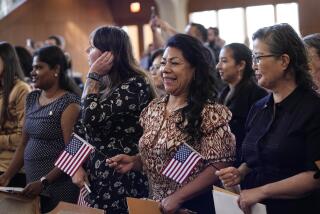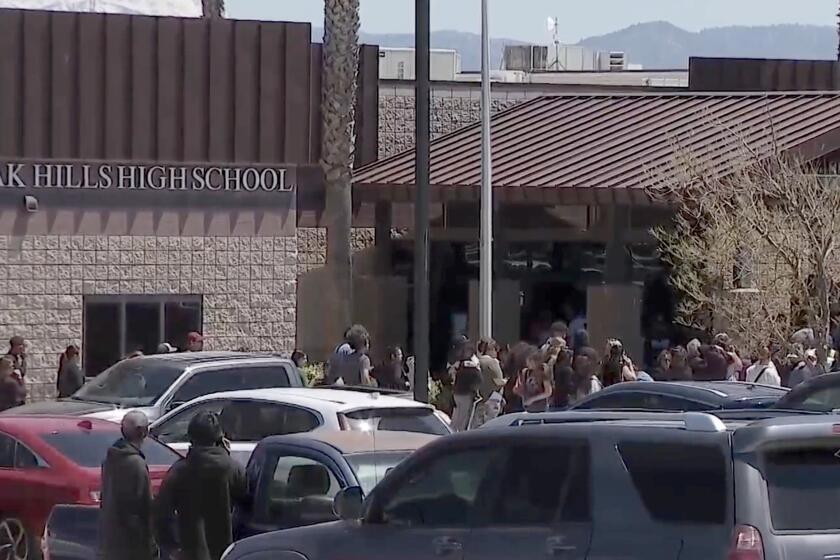1 in 3 adults in parts of L.A. are in U.S. illegally, study finds

In some parts of Koreatown and South Los Angeles, one in three adult residents is in the country illegally, according to a study released Tuesday by researchers at USC.
Countywide, about one in 10 adults is an immigrant who crossed the border illegally or overstayed a visa, the study found. Many of those immigrants have put down roots here: Half have been in the country for more than a decade, and 12% are homeowners.
Many are also the parents of American citizens. In Los Angeles County, one in five children has a parent living in the country illegally, according to the study.
“The share of children with at least one undocumented parent really speaks to the interwoven generations,” said Manuel Pastor, director of the USC Center for the Study of Immigrant Integration and a coauthor of the research along with Enrico Marcelli of San Diego State. “Another thing that’s striking to me is the length of settlement of the undocumented population. Rather than the person who stands in front of Home Depot who just got here a year ago, it’s actually a more settled population.”
As the debate over immigration reform gets underway in Washington, the stakes for California are particularly high.
One in four of the estimated 11 million people thought to be in the United States without legal authorization lives in California. Statewide, the USC study estimates that about 7% of residents, or more than 2.6 million people, are in the country illegally.
In Los Angeles County, 63% of immigrants here illegally are from Mexico and 22% from Central America, according to the study. Eight percent are from the Philippines, Korea or China.
In the Bay Area, the percentage of Asians in the unauthorized population is much higher, 23%. In the Sacramento area, 8% of immigrants in the country illegally are from Russia and other parts of the former Soviet Union.
Immigrants residing in L.A. County illegally make a median wage of $18,000 a year, compared with $47,000 for U.S.-born residents. Half work in factories, restaurants, construction or house cleaning, the study found. Only 33% have health insurance.
Nearly half of the county’s immigrants here illegally lack a high school diploma, and 60% do not speak English well, according to the study.
Nonprofits and foundations must work with the public sector to make sure there are enough English classes in the event of a mass legalization, said Maria Blanco, vice president of civic engagement at the California Community Foundation, which partially funded the study.
If newly legalized immigrants do not learn English, their job prospects are likely to remain limited.
“If we just do legalization but we don’t do English language education, we’ll really have to wait another generation,” Blanco said.
The study’s authors expect the earnings of unauthorized immigrants to increase if they receive legal status and can more easily switch jobs. By a conservative estimate, newly legalized immigrants in L.A. County could collectively earn an additional $1.5 billion annually, according to the study. Statewide, the income gain could be $4.6 billion annually.
Opponents of legalization have countered with studies showing that immigrants could use trillions of dollars in government benefits in the coming decades.
In addition to Koreatown, with 32% of the adult population here illegally, and Central Alameda at 39%, other areas with high concentrations include Echo Park, Bell, Huntington Park and East L.A. In Orange County, the study found that 30% of adult residents in Santa Ana are in the country illegally.
In El Monte, where one in five adults lacks proper documentation, Mayor Andre Quintero expects that more residents will be able to afford cars, homes and college for their children if they gain legal status.
“There’s such uncertainty and instability. They don’t have the opportunity to fully participate in anything and everything,” Quintero said. “They’re living almost in purgatory. It’s not sustainable.”
More to Read
Start your day right
Sign up for Essential California for news, features and recommendations from the L.A. Times and beyond in your inbox six days a week.
You may occasionally receive promotional content from the Los Angeles Times.







